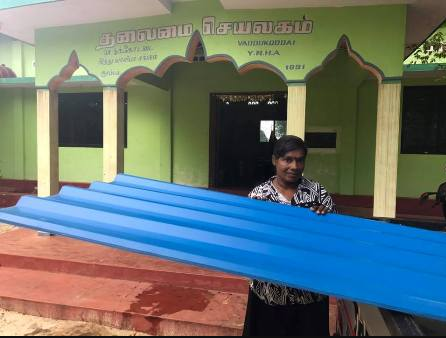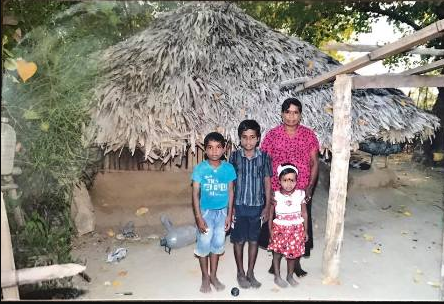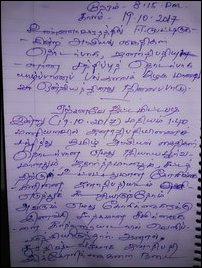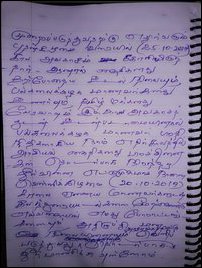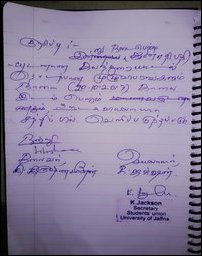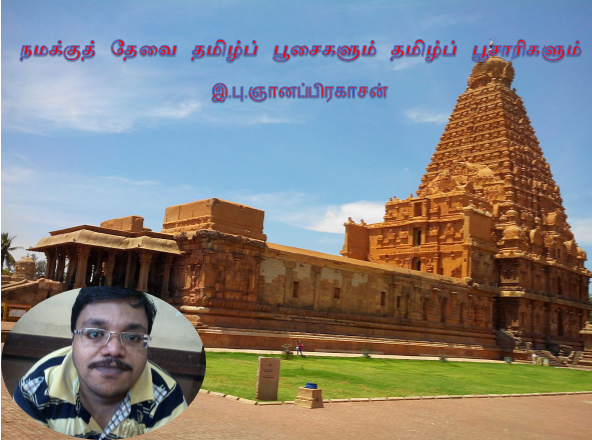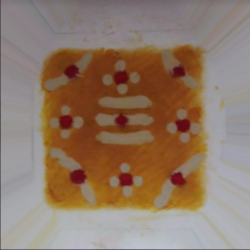நமக்குத் தேவை தமிழ்ப் பூசைகளும் தமிழ்ப் பூசாரிகளும்~2/3
கடவுளைப் பூசிப்பதில் தமிழர்களுக்கே உரிய தனித்தகுதிகள்!
“தமிழர்களுக்கு எனத் தனிச் சமயம் கிடையாது. இந்து சமயமே தமிழர் சமயம்! தமிழர்கள் இந்துக்களே! தமிழ்ச் சமயம் என்பதும் இந்து சமயத்தின் ஒரு பகுதியே!” என மீண்டும் மீண்டும் கூறி வருகிறார்கள் இந்து சமய அடிப்படையாளர்கள். ஆனால், இந்து சமயத்துக்கும் தமிழர் சமயத்துக்கும் அடிப்படையிலேயே பெருத்த முரண்பாடு உண்டு!
“கடவுள் என்பவர் அனைத்து வல்லமைகளும் கொண்டவர். அவர் மேலுலகில் வாழ்கிறார். அவருக்கு அழிவு என்பதே கிடையாது. அவர்தான் உலகத்தையும் உயிர்களையும் படைத்தார்” – இதுதான் உலக சமயங்கள் அனைத்துக்கும் பொதுவான இறைக் கொள்கை.
இந்து சமயமும் இதற்கு விலக்கில்லை. பிரம்மன் இருப்பது பிரம்மலோகம்; திருமால் வாழ்வது வைகுண்டம்; தேவர்கள் உறைவது தேவலோகம் என ஒவ்வொரு கடவுளும் வெவ்வேறு உலகங்களில் இருப்பதாக இந்து சமயம் கூறுவதே இதன் அடையாளம். கடவுளுக்குப் படைக்க விரும்பும் பொருட்களை அந்தந்தக் கடவுளுக்கான வேள்வித் தீயில் போட்டால் எரிந்து புகையாக மேலெழுந்து மேலுலகில் உள்ள கடவுள்களை அடையும் எனும் கோட்பாட்டைக் கொண்ட வேள்வி முறைகளை இன்றும் பிராமணர்கள் கடைப்பிடித்து வருவதும் இதன் அடிப்படையில்தான். கடவுள்தான் உலகத்தையும் உயிர்களையும் படைத்து – காத்து – அழித்து வருகிறார்; அவருக்கு அழிவே இல்லை எனும் கோட்பாடுகளும் இந்து சமயத்தில் ஆழமாக வேரூன்றியவையே.
ஆனால், தமிழர் கடவுள் கொள்கை இதற்கு முற்றிலும் நேர்மாறானது. இயற்கை வழிபாடும், தம்மிடையே வாழ்ந்து மறைந்த மனிதர்களை – அவர்தம் நினைவைப் – போற்றுவதும்தாம் தமிழர் இறைக் கொள்கை.
கதிரவனைத் தொழும் பண்டிகையான பொங்கல் விழா, காவிரி முதலான நீர்நிலைகளை வணங்கும் ஆடிப்பெருக்கு ஆகியவை இயற்கையையே இறையாய்ப் போற்றும் தமிழர் மரபுக்கு ஆயிரமாயிரம் ஆண்டுகள் தாண்டி இன்றும் சான்று பகர்கின்றன.வேப்பமரம், அரசமரம் போன்ற தெய்வீக மரங்களைத் தமிழர்கள் இப்பொழுதும் வணங்கி வருவதும், எல்லாக் கோயில்களிலும் தலமரம் என ஒன்று இக்காலத்திலும் இருப்பதும் இதற்கான மேலும் சில சான்றுகள். இவை போக, பண்டைத் தமிழ்க் கடவுள்களாகச் சங்க இலக்கியங்களில் குறிப்பிடப்படும் மாயோன் என்கிற திருமால், சேயோன் என்கிற முருகன், வேந்தன், வருணன் ஆகியோரும் உண்மையில் இயற்கையின் வடிவங்களே எனத் தமிழறிஞர்கள் ஆராய்ந்து நிறுவியுள்ளனர். (இதன் மூலம் இந்தக் கடவுள்கள் யாவரும் தமிழ்க் கடவுள்களே என்பதும் உறுதியாகிறது!).
இதே போல் உயிர் நீத்தவர்களை – அவர்களின் நினைவைப் – போற்றுவதையும் தமிழர்கள் இறைக் கொள்கையாகக் கொண்டிருந்தார்கள் என்பதற்குச் சான்றுகள் நிறையவே உள்ளன. குறிப்பாக, தமிழ் மக்களிடையே இன்றும் நீடித்திருக்கும் சாவுச் சடங்குகள் இதற்குக் கண்கூடான சான்றாய் விளங்குகின்றன!
தம் குடும்பத்தில் உள்ள ஒருவர் இறந்த பின், அவர் உயிர் விட்ட இடத்தில் (அல்லது உயிர் போன பின் அவரைக் கிடத்தி வைத்திருந்த இடத்தில்) சுவரில் மஞ்சள் பூசி, குங்குமப் பொட்டிட்டு, அந்த வரைபடத்தையே இறந்தவரின் உருவமாகக் கருதி அதற்கு முன்பு விளக்கேற்றி வைத்தும் படையலிட்டும் வழிபடுவது தமிழர் இல்லங்களில் இன்றும் உள்ள வழக்கம். அதன் பிறகும் ஓராண்டுக் காலத்துக்கு வேறு கடவுள் எதையும் தொழாமல், பண்டிகை நாட்கள் அனைத்திலும் இந்த வரைபட உருவத்தையே கடவுளாக எண்ணி வழிபடுவார்கள். இதுவும் தவிர, இதே போன்ற சுவர் வரைபடம் ‘நடுவீடு’ என்கிற பெயரில் தமிழர் இல்லங்கள் அனைத்திலும் இடம்பெற்றிருப்பதும், வீட்டில் எத்தனை கடவுள் படங்கள் இருந்தாலும் தமிழர் பண்டிகைகள் அனைத்தும் இந்த நடுவீட்டு உருவத்தின் முன்னிலையிலேயே கொண்டாடப்படுவதும் இறந்தவர்களைப் பூசிப்பதே தமிழர் மரபு என்பதன் கண்கூடான அத்தாட்சிகள்!
தன் குடும்பத்துக்காக வாழ்ந்து மறைந்த ஒருவர் இறந்தால் அவர் வீட்டில் உள்ளவர்கள் அவரை இப்படிப் பூசிக்கிறார்கள். இதே போல நாட்டுக்காக, மக்களுக்காக, குமுகத்துக்காக (சமூகத்துக்காக) வாழ்ந்த / உயிர் விட்ட ஒருவரை இது மாதிரியே அவர் நினைவாகப் பொது இடத்தில், வெட்டவெளியில் ஒரு கல்லை நட்டு, அதில் மஞ்சள் பூசிக் குங்குமம் வைத்து அதற்கு முன்னே விளக்கேற்றிப் படையலிடுவது தமிழ்க் குமுகத்தின் வழக்கமாக இருந்துள்ளது. இதையே ‘நடுகல் வழிபாடு’ என்கிறோம். “வையத்துள் வாழ்வாங்கு வாழ்பவன் வானுறையும் தெய்வத்துள் வைக்கப் படும்” என்று திருவள்ளுவர் பாடியதும் இதைத்தான் என்றால் அது மிகையில்லை.
எல்லாக் கடவுளரும் தமிழ்க் கடவுளரே!
‘நடுகல் வழிபாடு’ தமிழர்களின் மிகப் பழமையான பூசை முறை. பழந்தமிழ் இலக்கியங்களில் இது பற்றிய குறிப்புகள் விரவிக் கிடக்கின்றன. தொடக்கத்தில், போரில் வீரச் சாவைத் தழுவியவர்களைப் போற்றுவதற்காக ஏற்பட்ட இவ்வழிபாடு பிற்காலத்தில், குமுகத்துக்காகவும் மக்களுக்காகவும் கொள்கைக்காகவும் போற்றுதலுக்குரிய வகையில் வாழ்ந்த / மறைந்த எல்லோரையும் வணங்கும் முறையாக வளர்ந்தது. இன்று கோயில்களில் வழிபடப்பெறும் பெரும்பாலான தெய்வங்கள், தொடக்கத்தில் இப்படி நடுகற்களாகப் பூசிக்கப்பட்டவையே! இது வெறும் கற்பனையில்லை. தக்க சான்றுகள் உள்ளன.
புறப்பொருள் வெண்பா மாலை என்னும் பழந்தமிழ் நூல் ஒன்றில்,
வேத்த மருள் விளிந்தோன் கல்லென
ஏத்தினர் துவன்றி இற்கொண்டு புக்கன்று
என ஒரு வரி வருகிறது. “வேந்தர்களுக்கிடையிலான போரில் இறந்தவனுக்கு எடுக்கப்பட்ட கல் என்று சொல்லி வாழ்த்தி ஒன்று கூடிக் (அந்தக் கல்லுக்குக்) கோயில் எடுத்தல்” என்பது இதன் பொருள். நடுகல்லாக வழிபடப்பட்டவைதாம் பின்னர் கோயில்களாயின, கோயில் சிலைகளாயின என்பதற்கான சான்றாவணம் இது!
காட்சி கால்கோள் நீர்ப்படை நடுகல்
சீர்த்தகு மரபில் பெரும்படை வாழ்த்தல் என்று
இருமூன்று மரபில் கல்லொடு புணர – (புறத்திணை இயல், 5)
என்று நடுகல் வழிபாட்டு முறை பற்றிப் படிப்படியாக விளக்கும் தொல்காப்பியப் பாடலும் இந்த வழக்கத்தை உறுதிப்படுத்துகிறது.
சிவபெருமான் என்பவர் அனைத்து வல்லமைகளும் பொருந்திய பெருந்தெய்வம் என்பது இன்றைய நம்பிக்கை. ஆனால், தமிழ்ச் சூழலில் இவர் சித்தராகவே அறியப்படுகிறார்.
சங்க காலத் தமிழ்க் கடவுளான கொற்றவை கூட நடுகல் வழிபாட்டுத் தெய்வமாகவே அறியப்படுகிறார். இந்தக் கொற்றவையே ஆரிய – தமிழ் இனக்கலப்புக் காரணமாகப் பின்னாளில் துர்க்கை, உமையவள், அம்பிகை, அம்பாள், பராசக்தி என்ற பெயர்களால் வழிபடப்பட்டார் என்பதை இந்தப் பெண் கடவுள்களுக்கும் கொற்றவைக்கும் இடையிலுள்ள தோற்றம் – இயல்பு – வழிபாட்டு முறை ஆகியவற்றின் ஒற்றுமைகளைக் கொண்டு நன்கு அறியலாம்.
‘மலைமகள்’ என்றழைக்கப்படும் இந்தப் பெண் கடவுளின் மகனே இன்னொரு தமிழ்க் கடவுளான ‘முருகன்’ எனக் குறிப்பிடப்படுவதும், மலைமகளின் மகனான இவனே மலையும் மலை சார்ந்த இடமுமான குறிஞ்சிக்குக் கடவுள் என்று சங்க இலக்கியங்கள் பதிவு செய்திருப்பதும் ஒப்பு நோக்க வேண்டியவை. இன்றும் முருகன் கோயில்கள் பலவும் மலை மேல் அமைந்திருப்பதும், ‘குன்றுதோறும் குடி கொண்ட குமரன்’ என முருகன் போற்றப்படுவதும் சிந்திக்கத்தக்கவை.
தமிழர்களுடைய இயற்கை வழிபாட்டு முறைக் கடவுளே திருமால் என்று முன்னரே பார்த்தோம். இதற்கு ஏதுவாக, “தங்கள் கண்ணுக்குப் பச்சைப் பசேல் எனக் காட்சி வழங்கிய காட்டின் இயற்கை அழகை, ‘மால்’ என்று பண்டைத் தமிழர்கள் வழுத்தினர்” என்ற தமிழறிஞர் திரு.வி.க அவர்களின் கூற்றையும், “மாயோன் வழிபாடு தமிழ் நாட்டின் பூர்வீக வழிபாடுகளில் ஒன்றாகும்; மாயோன் என்பது கருமை நிறமுடையவன், திருமால் எனப் பொருள்படும்” என்ற ஈழத்து அறிஞர் கா.சிவத்தம்பி அவர்களின் சொற்களையும் இங்கே குறிப்பிட விரும்புகிறேன்.
ஆக, இன்று கோயில்களில் பூசிக்கப்படும் கடவுளர்கள் எல்லாரும் தமிழ்க் கடவுளர்களே! நடுகற்களாக ஒருகாலத்தில் தமிழர்களால் பூசிக்கப்பட்டவர்களே! அனைவரும் ஏதோ ஒரு காலத்தில் இதே தமிழ்நாட்டில் வாழ்ந்து மறைந்த இம்மண்ணின் மனிதர்களே!
கோயிலிலுள்ள கடவுள்கள் பற்றி இதுவரை பார்த்தோம். இனி, கோயில் பூசை முறைகள் பற்றிப் பார்ப்போம். அடுத்த பகுதியில்!
– தொடரும்
– இ.பு.ஞானப்பிரகாசன்
[‘அனைத்துச் சாதியினரும் பூசாரியாகலாம்’ என அண்மையில் கேரள அரசு சட்டம் இயற்றியிருப்பதைப் பாராட்டுகிறோம். தமிழ்க் காப்புக் கழகத்தால் நடத்தப்பட்ட ‘நமக்குத் தேவை தமிழ்ப் பூசைகளும் தமிழ்ப் பூசாரிகளும்’ எனும் கட்டுரைப் போட்டியில் இலக்குவனார் இலக்கிய இணையம் சார்பில் தை 16 , 2047 / சனவரி 30 , 2016 இல் வள்ளல் மாம்பலம் ஆ.சந்திரசேகர் அவர்களால் உரூ.3000/- பரிசில் வழங்கிப் பாராட்டப்பெற்ற திரு இ.பு.ஞானப்பிரகாசன் கட்டுரையை இந்த நேரத்தில், வெளியிடுகிறோம்.]

